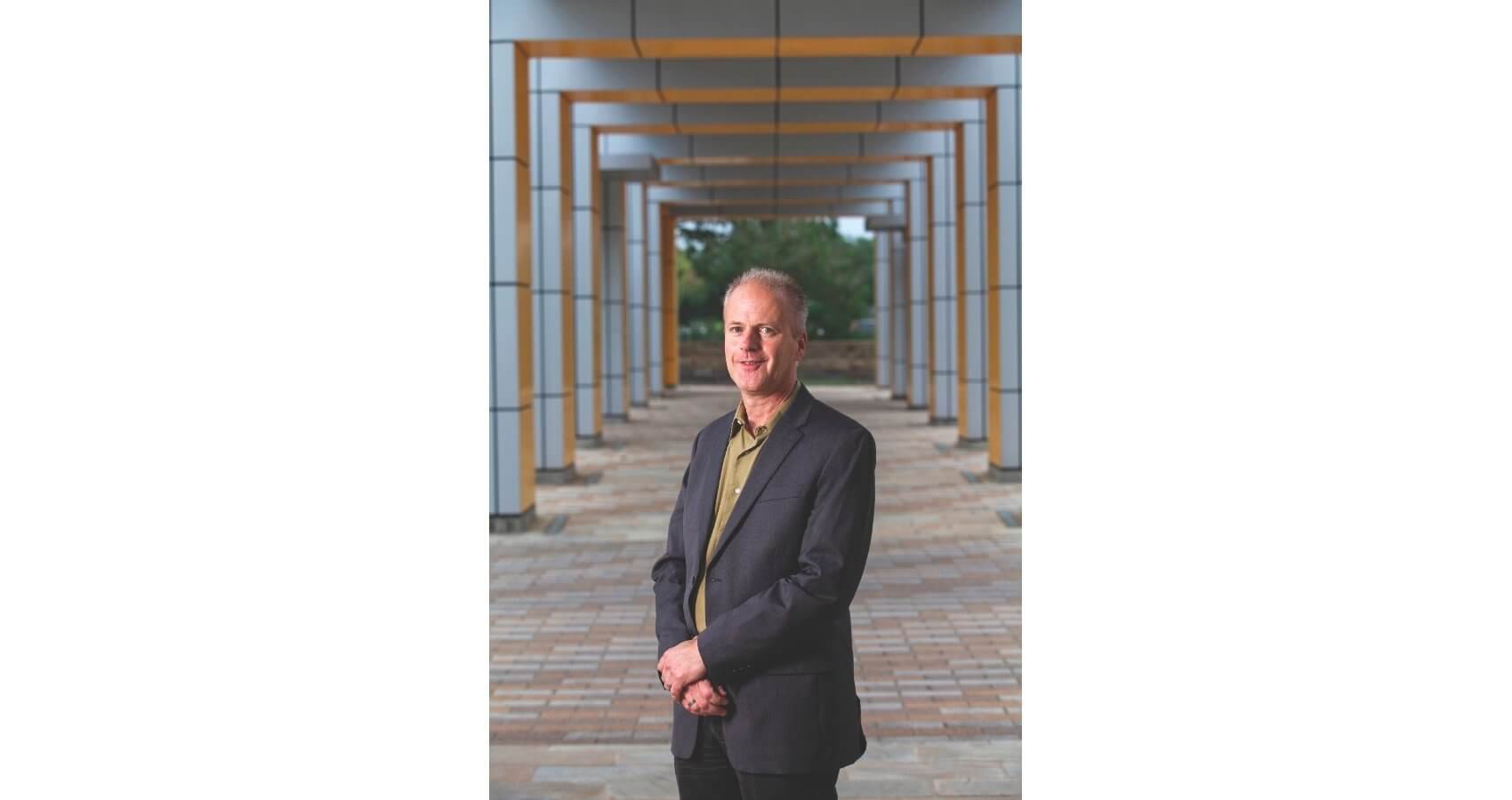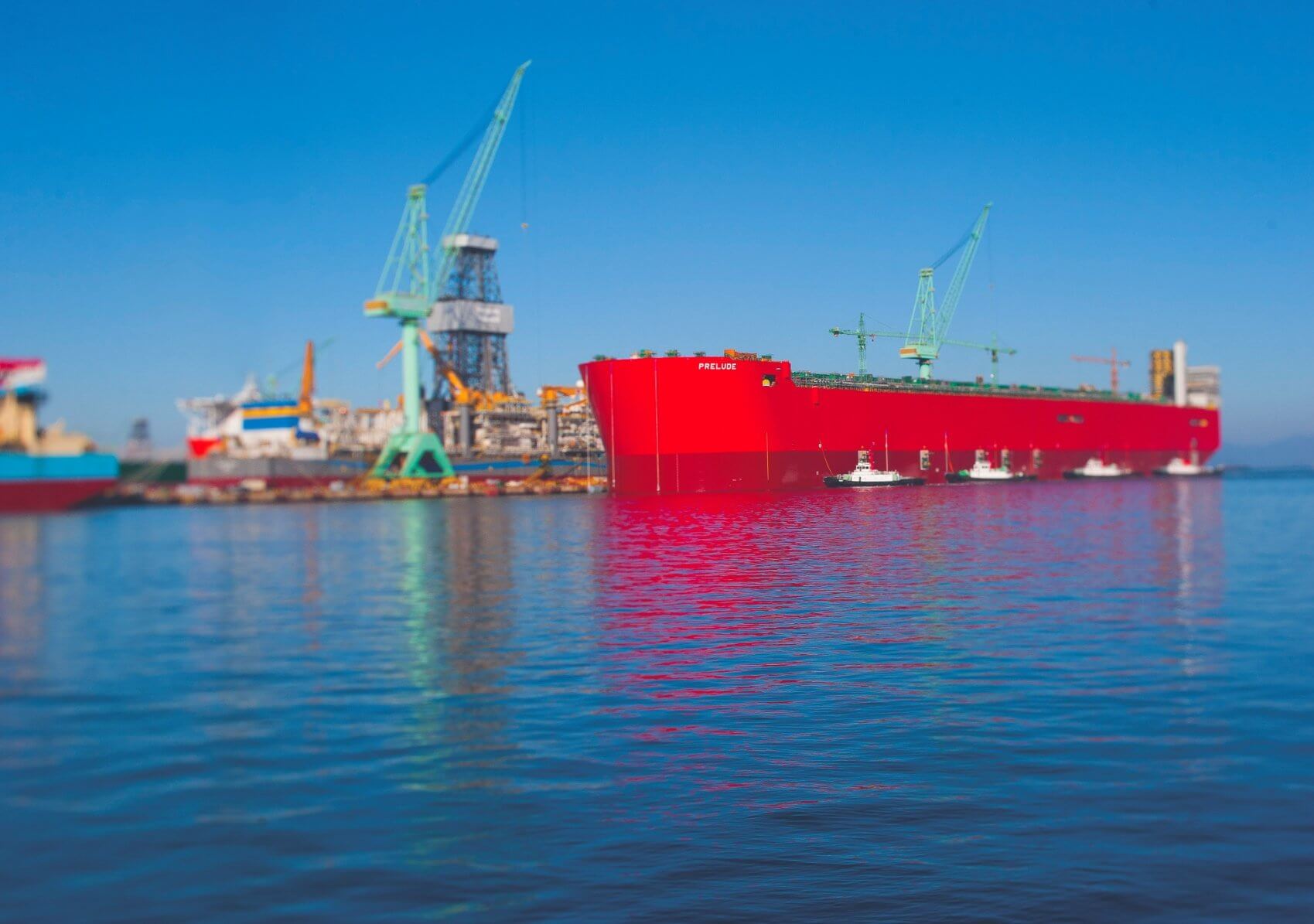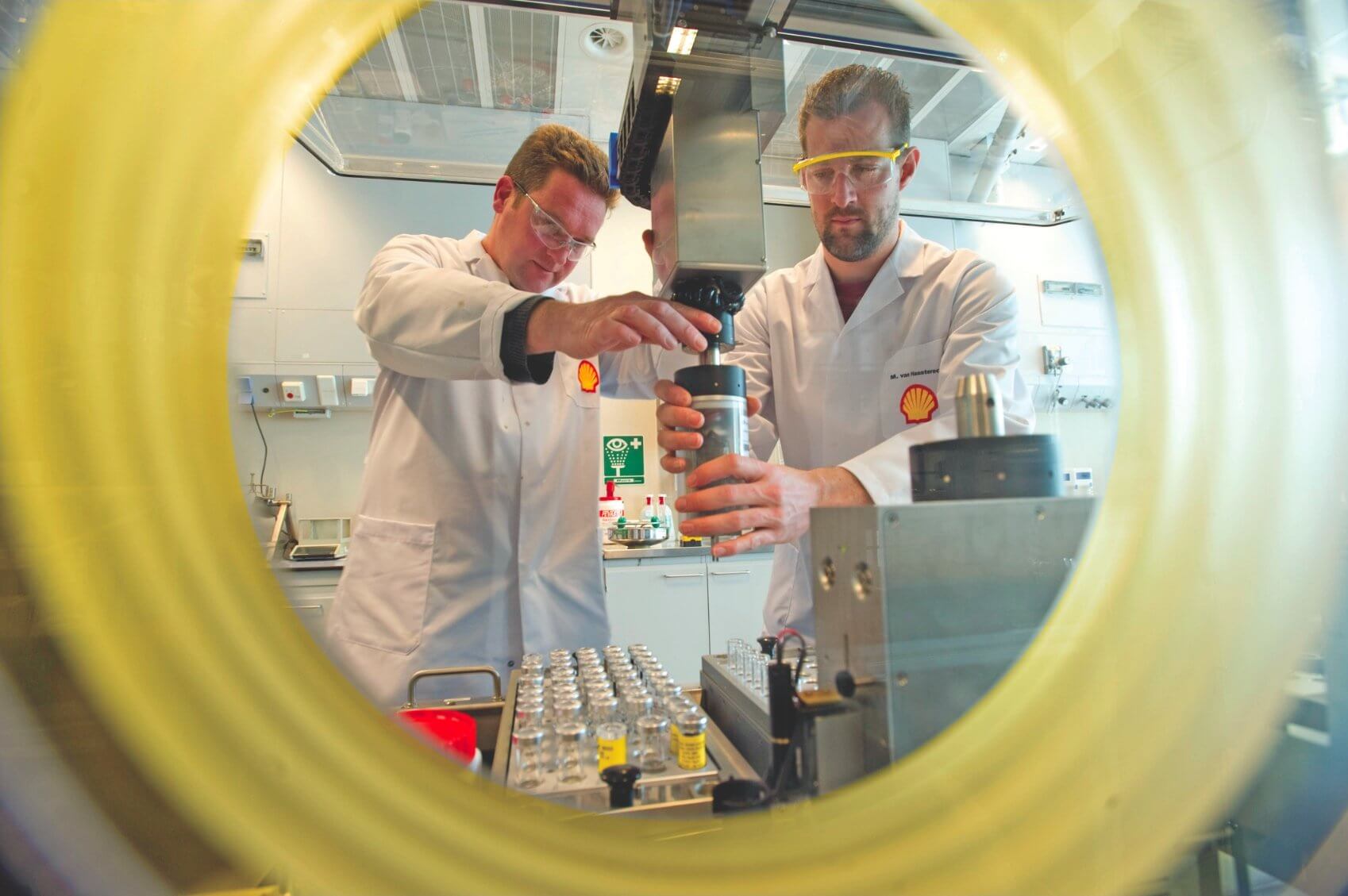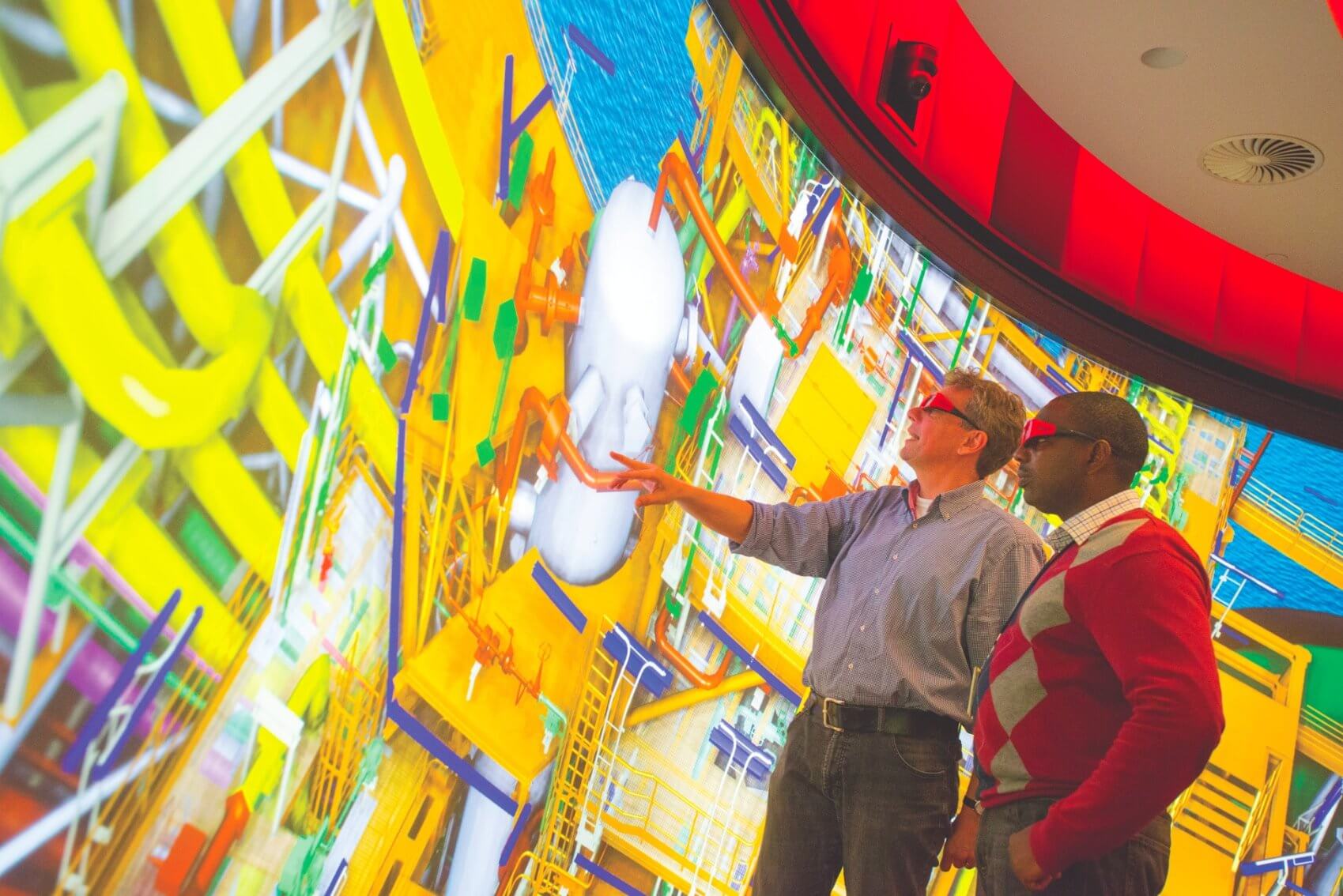Henk Mooiweer, Ph.D.
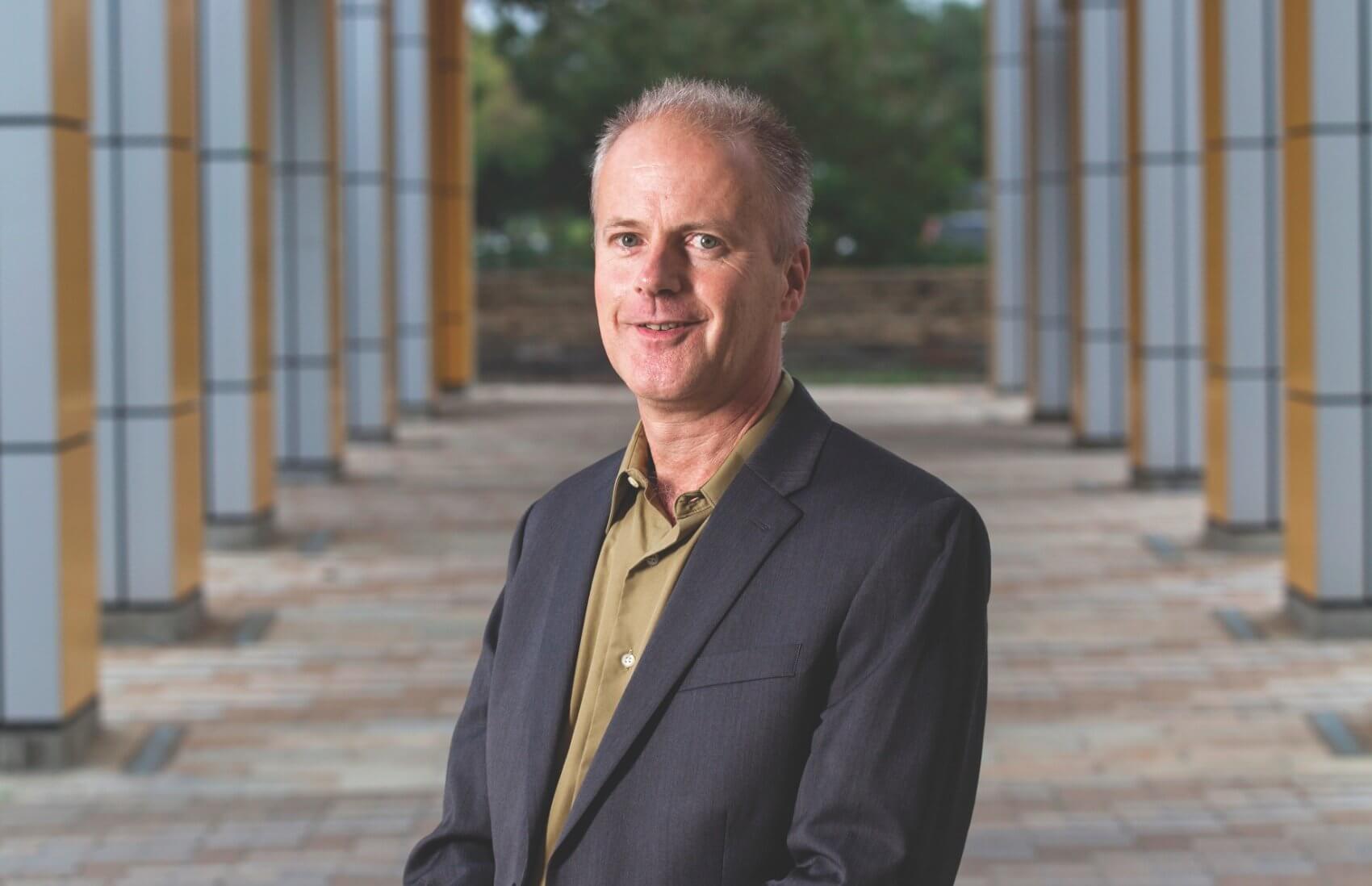
With a job title like GameChanger, it’s no surprise that Henk Mooiweer, Ph.D., thinks big every day. As a part of the Shell GameChanger program, Mooiweer helps quickly and efficiently test innovative ideas that have commercial potential. He sat down with TMC News to discuss why a global energy leader is investing in disruptive technologies and how addressing challenges facing the energy industry could benefit the medical community.
Q | Can you tell us about your formative years?
A | My childhood is best characterized by living in many places in different countries in different environments. I think it contributed to me being more open to different ways of living and seeing that there are multiple ways a society can be organized. I believe this played a role in me being open to different approaches and appreciating differences.
Q | Where did you grow up?
A | I was born in Singapore and I lived in my early childhood in Kenya in Africa. In my teenage years, I lived in the Caribbean on a small island, so I had a lot of different experiences. I’m Dutch, as you can hear from my accent, but I think living in many locations shaped me in looking at many situations with different eyes.
And I still travel a lot today. The Netherlands is a small country, so you are almost forced to travel because as you turn around, you are at the border. I’ve been to many countries and I really enjoy experiencing different cultures and seeing how societies are organized in different ways. People approach problems in different ways. It’s kind of cool.
Q | What brought you to Shell?
A | I studied chemistry and got a Ph.D. in organic chemistry. Actually, my original ambition was to become a medical doctor. But in the Netherlands, there was a lottery to determine access to med school, since a small country can only accommodate a relatively small amount of doctors. So I decided to study chemistry and I enjoyed it so much that I never went back to enrolling in the lottery again. I really enjoyed understanding how molecules interact with each other and how that can be influenced.
What attracted me to Shell compared to other companies was the opportunity to post for a variety of positions within the company. Once the assignment length is met, you can apply for a totally different position. It is extremely compelling to me because after a few years there is a risk that a job becomes a routine and that is, for me, the time to look for new and exciting work.
Q | Your current job title interesting.
A | It’s GameChanger. It’s a game-changing title which opens many doors, because people are anxious to know what this is all about. My current role in Shell is to invest in people with unproven ideas that have the potential to drastically impact the energy future.
Q | What different jobs or responsibilities have you had during your 25 years with Shell?
A | Half my career has been in research roles and always at the edge of what Shell was doing. It was often very innovative and exciting. The other half of my career was in business development and strategy type of roles but, again, always on the leading edge. I had roles in Shell Hydrogen, where I worked on a hydrogen economy plan in close cooperation with car manufacturers. I worked in the bio-space of Shell for a while, and I even was the CTO for a start-up company for Shell, where we made a new building product that could really store lots of CO2.
Q | So can you tell us where the idea for GameChanger was born and how it evolved?
A | Shell GameChanger is pretty unique. Shell has long practiced open innovation, inviting ideas from outside the company and working with others. It started in 1996 when Shell management realized that if you wanted to do something really revolutionary, if you have a revolutionary, maybe disruptive idea, you have to protect it from the immune system of an organization. You have to keep it separate and give it a chance to prove its concept. The GameChanger program identifies and nurtures unproven ideas and works to prove the technical and commercial viability of that idea quickly and affordably. A budget was set apart from the research budget to allow GameChanger to be nimble in decision making and quick in funding. It combines the benefits of support from Shell with freedom for the team to make its own decisions. This is important when you are asking people to come up with revolutionary ideas that may seem too risky for our normal businesses to invest in. Today, we have worked with over 1,500 innovators and brought over 100 ideas into reality, with sometimes very big impacts. Many GameChanger projects fail and that’s actually okay. It means we are working on difficult and high-risk opportunities.
We often work with innovators whose revolutionary ideas are high-risk, high-rewards type of opportunities. When an innovator or proponent brings forth an idea, we work with them to determine proof of concept. It’s here that ideas are stress-tested and proved to have merit or not. Many of them will fail. We are often asked, ‘How do you measure success?’ In GameChanger, it’s about quickly determining proof of concept, moving forward ideas and opportunities that would not have existed otherwise. It’s okay to fail as long as you do so fast and affordably. We’re actually looking for those very difficult ideas where the normal business can’t take that risk or where the idea is outside the current business strategy. We are creating the conditions in which innovation is supported within the industry.
Q | Can you talk a little bit about the importance of disruptive ideas and thinking outside the box?
A | Solving today’s energy challenges requires all of us to make a collective effort; energy companies can’t do it alone. These challenges need diverse and multifaceted solutions involving many different kinds of thought and expertise. So we need to think differently and more creatively in how to solve today’s problems.
Shell GameChanger is there to invest in revolutionary and disruptive ideas. Not all of our projects are highly disruptive, we work with a portfolio of ideas and yes, some of them can be really disruptive to our current business. In GameChanger, we use four criteria to look at new ideas. The potential value—could the idea create substantial new value if it works? We look at novelty—is the idea fundamentally different— revolutionary and not evolutionary? Does someone have a doable plan to prove the concept quickly and affordably? It needs to be more than just a thought or concept; we are investing in people with great ideas and the capability to bring those ideas forward. The last is relevance—why Shell? Shell is not in the chocolate business, but in the energy business. Ideas must be energy-related, but they can be very disruptive to Shell’s current business. That’s okay. We might even work on ideas which might make the current way of producing energy laugh-worthy after a couple of decades. Disruptive is okay. This is not easy because disruptive ideas, by definition, also trigger the immune system. So how can you navigate rapidly towards proof of concept, and show that an idea might actually work? We are working closely with our proponents both inside and outside our industry to speed up their development and deployment. We are looking for the moment that experts say, ‘Oh, I never thought that could work but it actually seems to work, tell me more.’
Q | Why is Shell investing in innovation in this way?
A | Revolutionary innovation is changing the way we live, work and learn. Technology is becoming more complex and we need the right combination of traditional R&D and open innovation to help drive, develop and deploy new solutions. Most of the change that we do is evolutionary and it’s very important to have incremental improvements. Think about the digital camera that suddenly became a breakthrough after being invented quite a while ago. Initially it looked awful, like a large box that took 30 seconds to take a picture—and who wants to have something like that? Really big breakthroughs are often revolutionary, changing how we share information and communicate. We have seen great value in our open innovation programs and the opportunities for revolutionary ideas. Shell GameChanger is there to give those ideas a chance in the energy space.
Currently, we are seeing that many of the best and brightest ideas are generated from unlikely partnerships across different industry sectors and that’s a space that GameChanger likes to play in. But you really have to look deeply at how innovative you are and how to become more innovative. Innovation is quite often connecting the dots. I think that innovation starts with combing through different ideas. I believe strongly that combing through unusual ideas and unusual approaches will lead to better innovation. Building on that, we can see how possible solutions
for the challenges in the energy industry may not come from the energy experts. The best truly revolutionary ideas might come from experts of entirely different disciplines or industries. This will also work for the health or medical industry. I think there will be fantastic solutions for medical problems that come from non-medical experts. Experts from another field will ask the ‘stupid’ questions, come up with unusual approaches and think out of the box, not hindered by paradigms. I am convinced that Shell specialists may have solutions for certain medical challenges right now. The problem is how we connect those challenges and solutions.
I do think Houston is uniquely positioned with energy, health and aerospace expertise. There are huge silos where a lot of innovation is going on with the opportunity to improve the exchange and connection between the silos. There are a few examples of where there has been very successful cooperation and cross-fertilization. Can you imagine what could happen if these silos connected in a much better way? So if innovation is connecting the dots, and you can do that in a better way within Houston, huge things will happen. Many people in Houston share this feeling. It’s time that we start to connect those dots and make it happen.
Q | What’s the process like for GameChangers? Where do these ideas come from and how do you bring people in?
A | Shell GameChanger is a global program. Our team running the program consists of 12 dedicated technical and scientific experts within Shell. The majority of our team sits in Houston or in the Netherlands. We combine the benefits of support from Shell with the freedom to make our own decisions. Our innovators or proponents, as we call them, can come from anywhere and can be anyone. Some great networks and partnerships have started with submitting ideas on our website.
Every GameChanger is working with a portfolio of proponents and their projects. We have about 60 projects in execution phase. Projects are distributed among the GameChanger team. In addition to being a sponsor for our portfolio of projects, part of the job is finding alignment among innovators and creative community beyond our industry. How do you find these innovators that have unusual ideas that can have a drastic impact? It’s searching. It’s hunting. It’s being active in unusual places.
I think the initiative in the medical center to create an innovation space and an open collaborative space is great. Putting people together is only part of the solution. The real challenge is to make people interact with each other and really try to connect challenges and solutions. That’s quite difficult. You can put people in the same room, and put them in line for the same coffee machine, but nothing happens. You need to do more to really catalyze this dot connection. It often happens by serendipity, that ‘wow’ moment when suddenly things click together and something beautiful starts to happen. Too often, this is just a coincidence. It’s just a matter of luck to find revolutionary solutions for the large problems in this world. The question is thus, how can you catalyze serendipity? How can you create an environment where this is more likely to happen? The new innovation space in the medical center that was just created is an excellent start and more may be needed.
Q | So how is GameChanger doing that?
A | About 90 percent of our projects are from external parties from outside Shell. Shell GameChanger is trying to experiment with ways to connect with external parties in a different way. There are two difficulties in connecting to external parties. The first one is—where to look? How do you find people who are open to working on our challenges? And secondly, how to communicate the challenges we have in our industry to external parties. Where we look is not at the typical energy conferences. We experiment with using clever search tools to find ‘unusual’ parties with expertise or solutions that might be relevant to our problems. We also try to organize events. For example, we host a speed matching session, which is sort of speed dating for experts or scientists. You force people to very rapidly dive into the challenges and the issues behind the challenges. In this dot connection on steroids, we hope to come up with completely different solutions that were not on our radar screen. We’ve done this with medical experts, for instance MD Anderson experts and Shell experts, which was very exciting. The Shell experts didn’t know anything about cancer and the cancer experts didn’t know anything about an oil reservoir. It led to fantastic collaboration opportunities and led to a project that may generate mutual value.
Q | Can you tell me a little bit more about that connection between energy and medicine?
A | There are similarities between our business and the medical business. If you look at an oil or gas reservoir, our business is trying to find where oil and gas are located, how to access it, and how to remove it safely.
If you compare cancer in a human body to oil in a reservoir you see some similarities—location, access and safe removal. The scale is very different. In the human body you are talking about inches and in a reservoir you are talking about miles. But on a molecular level there are interesting analogues, also, in the techniques we use. We both use imaging to find where certain spots are. It is not only about sharing these practical approaches; it’s connecting different ways of thinking, different backgrounds, approaches and fields of expertise. More importantly, the exercise removed some perceived differences between the parties involved and opened the door to future collaboration.
Q | Does your team work often with the Texas Medical Center?
A | I wish we did. I think there is a huge opportunity. The Texas Medical Center is the home of such an enormous, highly concentrated group of experts, basically in our backyard. The problem is that TMC is so large that it’s hard to find out where to start. We’ve done a speed matching event, as I’ve mentioned, with MD Anderson, and we have contacts with other experts in the Texas Medical Center. We are very interested in looking at more intense collaboration and connection opportunities.
Q | So what does it take to find those people who may have a good idea but don’t know where to go with it?
A | A lot of efforts in the innovation space are focused on entrepreneurship. Many universities have entrepreneurship programs and incubator spaces seem to pop up everywhere. How can you help small startup companies? How can you help them test their ideas in the market? That is all very relevant, but there’s relatively little effort to address how to come up with out-of-the-box solutions to certain problems. When it comes to making connections, we still seem very dependent on chance and the efforts of some inventors. The space in which GameChanger operates is often not on the radar screen. How can you, in a fast and affordable way, test and prove a concept before starting to burn money on development? How people invent and innovate and how people rapidly test an idea is hardly being taught at universities. If you ask the best innovators ‘How did you learn to innovate?’ It’s often by trial and error. There are many entrepreneurship classes, but very little on teaching people to invent and be innovators. We are collaborating with Professor Ness from the UT School of Public Health to see if we can define methods to improve invention and innovation. The same applies at Rice University; we are collaborating to see if we can make students much better inventors and innovators.
The big problems of this world—food, energy, water, health and education—scream for big solutions. I believe many people are working hard on more evolutionary types of solutions. I am not saying that this isn’t important and valuable. But what we really need are these out-of-the-box revolutionary solutions. You can’t just depend on chance; we need to use methods to get more impactful solutions much faster. This must be very relevant for TMC as well.
Q | How does one teach innovation?
A | It seems that the current paradigm is that either you are an innovator, a kind of super-creative human, or you’re not. There’s some evidence that you can train people to be more innovative. Our collaboration with Professor Ness is very insightful. She uses the following example: We believe it is ridiculous to ask someone not trained in statistics to do statistics. But we believe it is normal to ask someone to be innovative without training. I believe there is a lot to be gained in innovating to innovate and training to innovate.
Q | What advice would you give to potential innovators?
A | Of course don’t stop inventing and innovating, although it may be hard and energy draining. In general, find a way to give revolutionary innovation space. Shift the frame, force serendipity, make unusual connections, look in unusual places, and focus on the most difficult aspects of your idea. It’s important early on to get someone to challenge why these ideas will not work and what are the most difficult aspects. Of course, if your readers have energy-related ideas which can have a drastic impact on the energy future, they are obviously very welcome to come to GameChanger. Energy-related should be seen in the broadest sense. To give you a flavor, we are interested in nanotechnologies, material science, sensors, imaging, robotics, remote operations, transport in macro-pores, etc. We are challenging ourselves and others to think about the future with an innovative mindset – to be open to different views about energy, cities, mobility and sustainability. If you have an idea, submit it to GameChanger via our website. On ideas that meet our criteria, we act generally fast, moving from idea to fully funded project in just two to three months. We don’t need tedious proposals. We can start with just an idea and a conversation.
Q | Any closing thoughts?
A | Innovation is deeply ingrained at Shell. You could say that innovation is in our DNA. It’s all about making things better than before. Shell thrives on such challenges. With over 100 years of experience, we continue to find innovative ways to address these challenges. But we know that no one company alone can develop all of the advanced technologies needed. We also know that there are more brains outside Shell than inside Shell.
Shell has, therefore, a whole portfolio of tools and organizations that support open innovation. At the beginning of this spectrum of tools we have GameChanger with the focus on unproven ideas with a drastic impact. To deploy more mature technologies from other industries into Shell, we have Shell TechWorks. By system engineering other industries’ proven technologies, Shell TechWorks leverages the experience of other pioneering industries like aerospace, IT and medical to solve specific Shell business challenges. Shell has a long history collaborating with leading universities, research institutes and industrial partners. We work very closely with over 100 universities where we sponsor research and collaborate with researchers to address technology questions. We work with our suppliers to co-develop better solutions. Shell is co-developing innovation with specific suppliers that have the capability to add value to multiple technology areas across Shell and can quickly deploy them. And we work with smaller companies on their innovations. We have Shell Technology Ventures to invest in start-up companies across the energy sector to speed up the development and deployment of new technologies which complement our business. If of interest to Shell we support these companies to become successful. We act as an investor and a partner in commercialization by connecting our technical experts with entrepreneurs and early-stage companies. It’s about having the right tools to carry ideas and concepts through to commercial deployment, and Shell has a variety of tools or programs to support open innovation across our industry as well as other industries.
So back to your earlier question: how do you innovate in Houston in medical, energy and aerospace? They are geographically very close together and that makes Houston truly unique. Many people talk about what would happen if the silos in Houston actually started to interact with each other. I believe truly amazing things will happen if this is being catalyzed and facilitated in the right way. You need more than just people in the same room. Talking about and exchanging challenges makes you connectable and will attract people who want to solve for your issues. It’s time to start collaborating and address the large problems in this world. We are challenging ourselves and others to think about the future with an innovative mindset – to be open to different views about energy, cities, health, medicine, etc. Those are extremely complicated challenges. They need a holistic approach by people from different disciplines who are really working together. That will require also a different approach to research. This is not about writing another research paper and receiving another grant. We need a different approach.
I realize those are just bombastic words. So how do we turn this into reality? Can you imagine what could happen in Houston if the best innovators in Houston could spend 10 percent of their time interacting with other innovators? If only 100 energy experts could interact with 100 medical experts, it could really cause a revolution, and that’s a small fraction of what we have in Houston. Let’s say every Friday afternoon, we start to connect, dismantle the silos and see how serendipitous things will happen. It’s time. I think the new TMC innovation space could be a fantastic platform to start doing this. The innovations the world requires need to be diverse and multifaceted, involving many different kinds of expertise. We need to continue hosting events where people from different disciplines can share knowledge, spark new ideas, connect dots and create real game-changing solutions. I am really looking forward to an intense cooperation with TMC where Shell GameChanger can help facilitate those connections between energy and medical silos. In this way innovation will go beyond the current boundaries of industry to drive the wide-ranging solutions. Houston can be a test ground to break silos and approach problems in a different way. I expect we will come up with some valuable innovations. More importantly, we will drive ‘open’ innovation — getting others to think differently and more creatively too. Let’s change the game.

